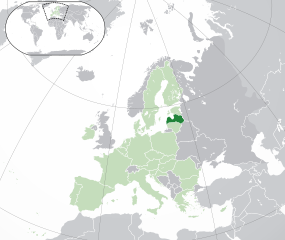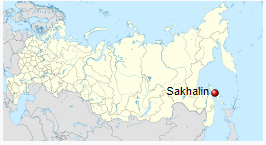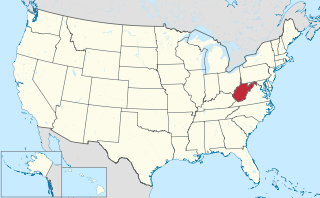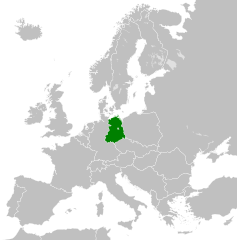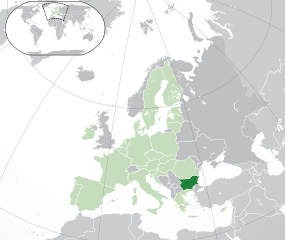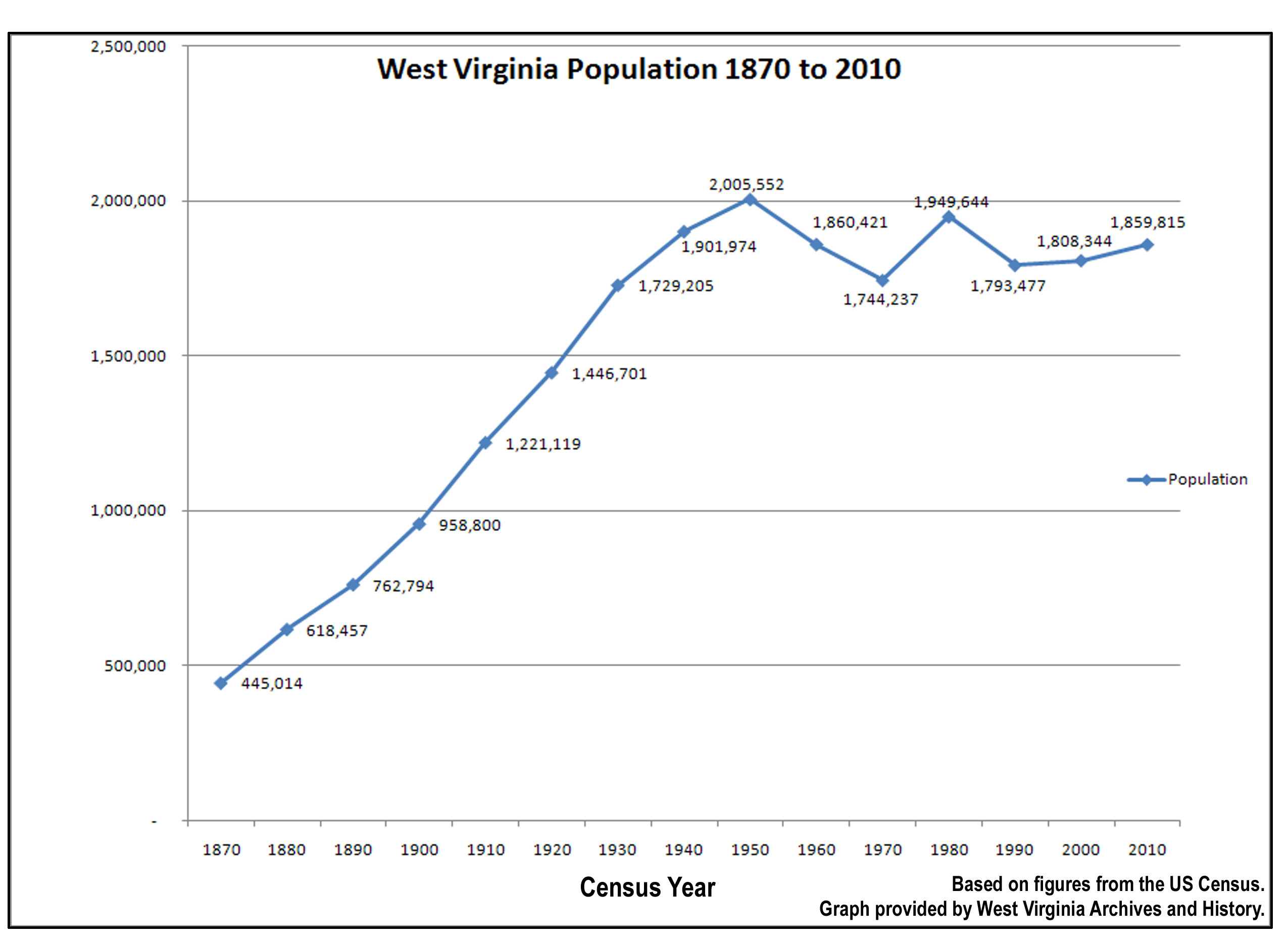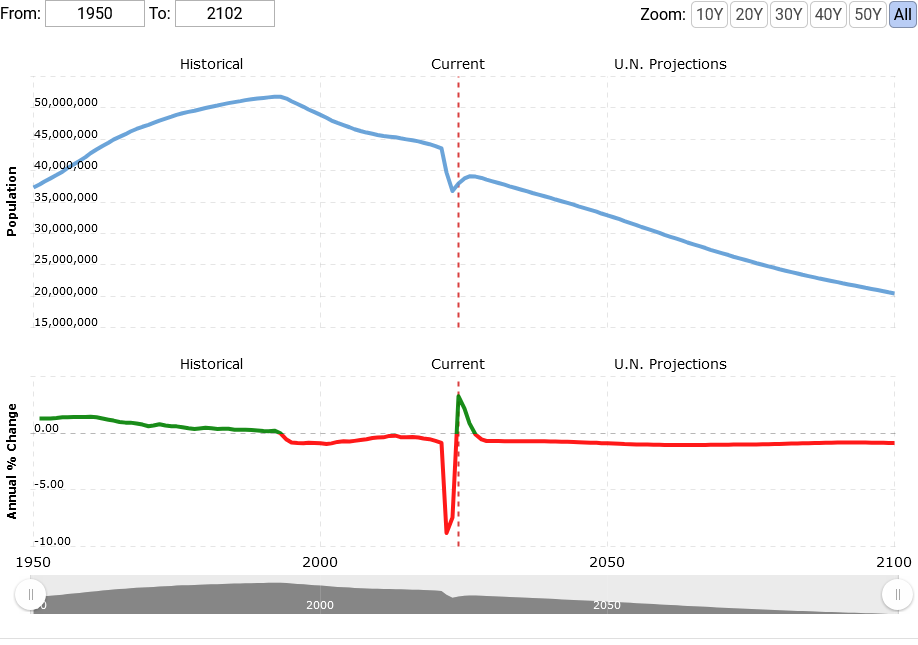It is generally seen as a given that the human population worldwide has increased everywhere since the end of the second World War.
There are very good reasons for this, so you can imagine my surprise finding out that the island of Ireland had a population of 8,175,124 in 1841. This of course was before the Great Irish Famine, that roughly halved the population through death and emigration. The population would never recover, having reached 6.66 million in 2016. (To be clear, the data both times includes what today is "Northern Ireland").
Are there any other examples of large pieces of land whose population was higher at any point in history before 1950 than it is now? If you know of more than one example, please include them all.
Criteria:
- The geographies in question must be at least 20,000 km² in size.
- They must have had a population of at least 500,000 people back then. If the numbers are not certain, it must historically be plausible to have had this population.
- It must either have been an administrative unit in some way (Duchies and similar are fair game) or a geographical unit (Like the Island of New Guinea, the Balkans, or Manchuria); or is one of them right now.
Why the criteria: Since the question arose in the comments: (Rule 1) to avoid depopulated cities or similar as answers, which there are plenty in history. (Rule 2) to have a certain significance of the depopulation. (Rule 3) to not draw arbitrary boundaries as to answer the question. (Rule "4", the cutoff at 1950) because quite a few countries experienced a population loss in recent years (e.g. Russia, Japan, Croatia, Poland, Syria). This is a trend that will only get more common in the developed world in the years to come and therefore is not particularly noteworthy. Conversely, not having a larger population now than at the end of WW2 is very unusual, as the world population has tripled since then, mainly due to a post-war baby boom and a significantly longer life expectancy in close to all regions. Also, sustaining a given population in an area has become easier through advances in agricultural techniques and global supply.
